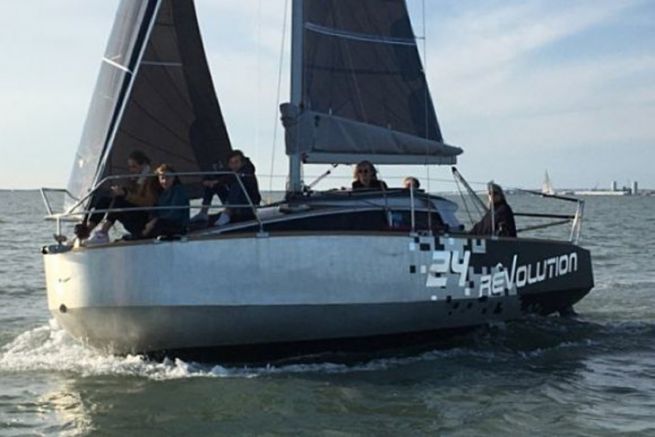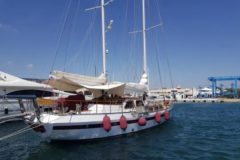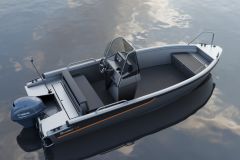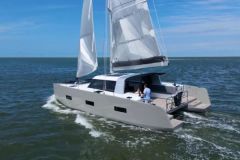3rd AFEP scow signed Raison
Launched with the Revolution 22 in 2012, the range of scow-bowed sailboats from the AFEP shipyard in La Rochelle continues to expand. Still backed by architect David Raison, renowned for his Mini 6.50s, the builder then developed the Revolution 29, and in 2021 will present the third, intermediate model, the Revolution 24, a 7.25-meter-long, 2.89-meter-wide yacht. The latter continues to benefit from hydrodynamic innovations, while taking advantage of a roof with a more elaborate design than the first born of the range, in line with the elegant 29-footer.
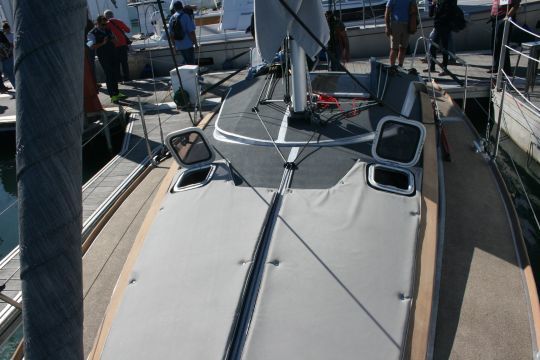
A simple deck and a robust boat
In addition to the aforementioned bow, it is the choice of materials that is striking when you first see the boat. AFEP remains faithful to its favorite material, aluminum. It gives the boat a rustic feel and is solid against impact, while remaining more easily recyclable than composite. The insulation and anti-skidding are made of visible sprayed cork. The resulting empty displacement of the boat is 2,248 kg. The mainsail with horn of 26 m² and the genoa of 17 m² should propel the boat at speeds more than reasonable.
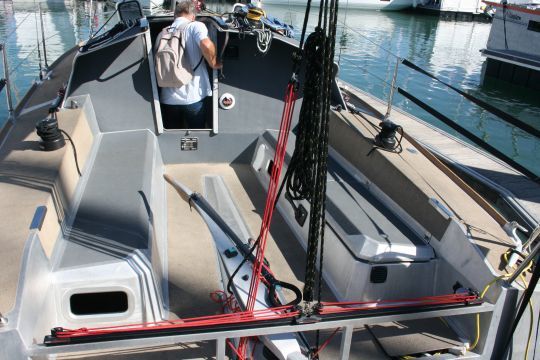
With a tiller, a large cockpit, a fixed central footrest and a single piano winch on the roof, the Revolution 24 plays it simple. The roof cap effectively protects the electronics by avoiding reflections, while adding a touch of elegance. We can regret the tiller rail which does not facilitate access to the small bathing platform, but which secures the cockpit.

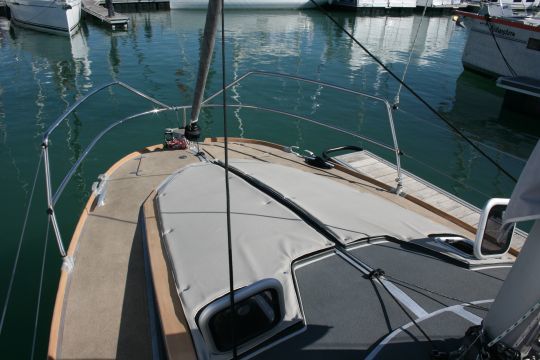
The front deck and its impressive surface are a strong argument for the boat at anchor. The cushions, attached to the roof by snaps, invite you to lie down. They also allow to hide the large plexiglass panels, avoiding the greenhouse effect inside the saloon.
Generous cabins and saloon
Going down the 3 slightly narrow steps, one discovers a galley along the port side. There is a sink and two gas cookers on gimbals, as well as a nice worktop and storage.
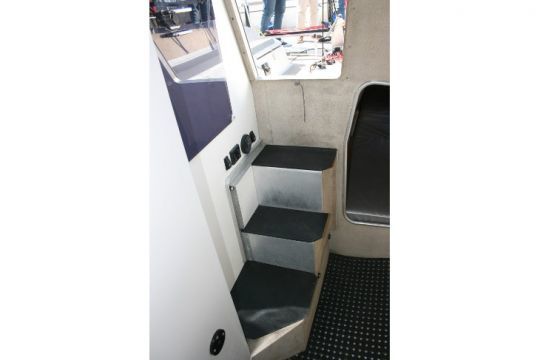
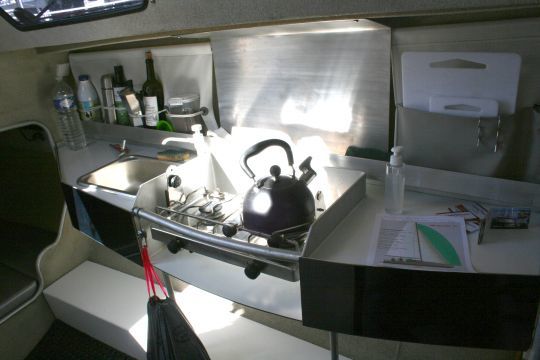
On the aft port side, a large double berth is located under the cockpit.
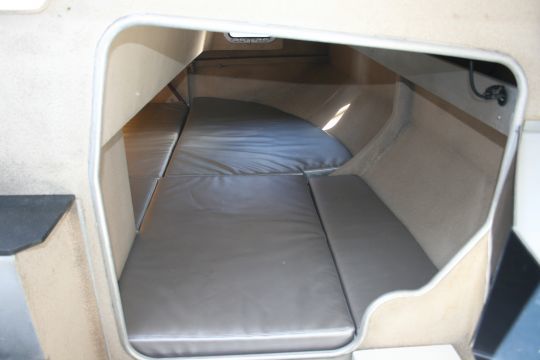
On the bow is the boat's most charming feature: its large saloon, surrounded by equipment and textile storage.
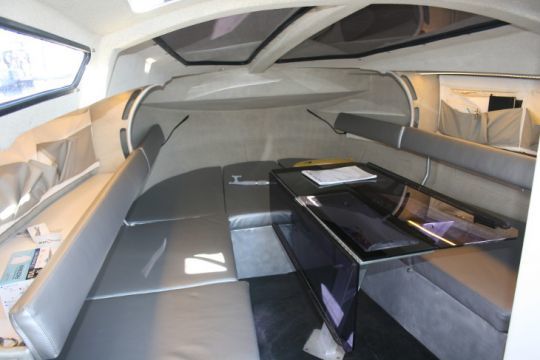
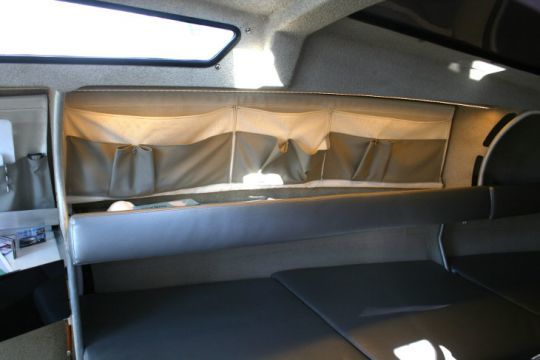
On the starboard side, separated from the axis by the sabre keel well, which allows to pass from 1.90 m to 0.60 m of draught, there is a sanitary space with toilets. A manhole gives access to a technical storage area under the cockpit.
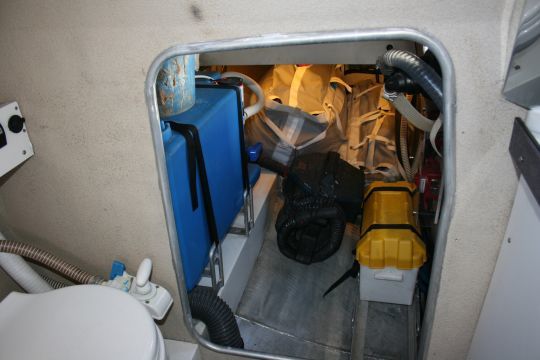
If the choice of the sabre keel partly constrains the layout without allowing to take full advantage of the space, the Revolution 24 nevertheless benefits from a nice interior volume for its size.
The boat is proposed in its basic version at 89 500euros TTC, with an inboard engine of 13 horses.
